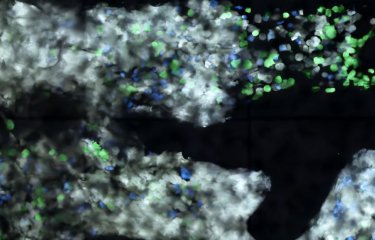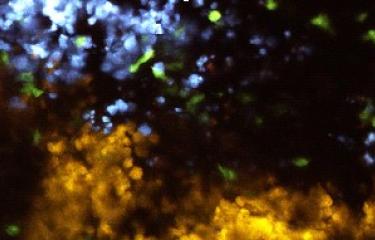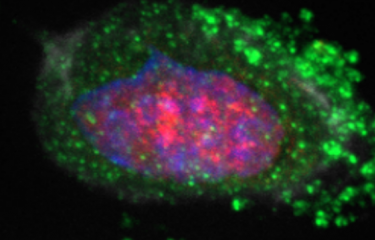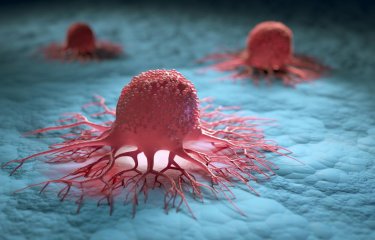Every day, the bone marrow generates billions of new blood cells. This process, known as hematopoiesis, consists of a series of stages by which hematopoietic stem cells produce red blood cells, macrophages, lymphocytes, etc. The MYC gene and the mechanisms that regulate its expression play a major role in these various stages, but they are also involved in several types of leukemia as a result of the overexpression of MYC in blood cells. Scientists have revealed that hematopoiesis is regulated by a genomic region, distant from MYC, containing several enhancers. In some types of leukemia, it appears that cancerous blood cells overuse this cluster of regulatory elements. The ability to modulate the activity of the cluster could therefore represent a new prospect for the treatment of this type of cancer, which is caused when the genetic programs regulating cellular differentiation are hijacked.
All the cells in our body have the same genetic makeup, but each cell uses it differently. Specific proteins known as transcription factors activate or suppress gene expression. This allows them to regulate the formation of different cell types, making sure that each one expresses all the genes needed for its specific functions.
MYC is a well-known gene: "MYC functions as a vital transcription factor in the series of decisions that leads from a hematopoietic stem cell to the formation of all blood cells, but its overexpression can result in cancer," explains François Spitz, head of the Genomics and Epigenomics of Animal Development Unit at the Institut Pasteur and previously a scientist at the European Molecular Biology Laboratory (EMBL). However, the precise mechanisms governing how MYC levels are controlled in each cell type had previously remained largely unknown. François Spitz and scientists from the German Cancer Research Center (DKFZ), the Heidelberg Institute for Stem Cell Technology and Experimental Medicine (HI-STEM), and the University of Toronto identified a genetic region that regulates the activity of the MYC gene in different blood cell types. Their results and research were published at the beginning of the year in the journal Nature.
An enhancer known as BENC
The scientists discovered that a series of expression regulators, which they labeled BENC ("blood enhancer cluster"), was responsible for the transcriptional regulation of MYC. "If we remove this BENC region from the hematopoietic stem cells in the bone marrow, the MYC gene no longer functions," explains François Spitz. BENC had previously escaped the attention of the many scientists working on MYC because it is in a chromosomal region that is distant from the MYC gene on the genome map. But in the nucleus of blood cells, the chromosome forms a kind of loop that brings the BENC enhancer and MYC closer together, enabling BENC to have an impact on MYC expression.
BENC is modular in structure: it is composed of nine regulatory modules. Each of these recruits different transcription factors depending on the cell type. The combined effect of all these elements enables each cell to produce the exact level of MYC needed for it to function. So some BENC elements are mainly involved in enabling stem cells to produce the first progenitors of blood cells, for example, while others are responsible for lymphocyte maturation.
From the regulation of blood cell production to leukemia
Having made this discovery, the scientists wanted to know whether BENC also plays a role in leukemia cells. It had been observed, for example, that in 5 to 6% of acute myeloid leukemia (AML) patients, BENC was duplicated in cancer cells, which could deregulate the activity of MYC. A more detailed study showed that in some patients, BENC seemed to be overly active in leukemia cells; this epigenetic modification was directly linked with an increase in the expression of MYC and its target genes and also had an impact on the therapeutic prognosis. Remarkably, silencing BENC in mice with a leukemia model led to lasting remission from the disease, showing how dependent leukemia cells are on this regulatory element.
"These results show how a normal mechanism" – blood cell production – "can become pathological when it is deregulated," continues François Spitz. Since we already have approaches to influence the activity of enhancers, BENC might even become a target for novel therapies to treat this type of blood cancer.
Source
A Myc enhancer cluster regulates normal and leukaemic haematopoietic stem cell hierarchies, Nature, January 25, 2018
Carsten Bahr1,2,3*, Lisa von Paleske1,2,3*, Veli V. Uslu4*, Silvia Remeseiro4, Naoya Takayama5,6, Stanley W. ng7, Alex Murison5,8, Katja Langenfeld4, Massimo Petretich4, Roberta Scognamiglio1,2,3, Petra Zeisberger1,2, Amelie S. Benk1,2,3, Ido Amit9, Peter W. Zandstra7†, Mathieu Lupien5,8, John E. Dick5,6, Andreas Trumpp1,2,3,10,11§ & François Spitz4,12,13
1. Division of Stem Cells and Cancer, German Cancer Research Center (DKFZ) and DKFZ-ZMBH Alliance, Im Neuenheimer Feld 280, 69120 Heidelberg, Germany.
2. Heidelberg Institute for Stem Cell Technology and Experimental Medicine (HI-STEM gGmbH), Im Neuenheimer Feld 280, 69120 Heidelberg, Germany.
3. Faculty of Biosciences, University of Heidelberg, 69120 Heidelberg, Germany.
4. Developmental Biology Unit, European Molecular Biology Laboratory (EMBL), 69117 Heidelberg, Germany.
5. Princess Margaret Cancer Centre, University Health Network, Toronto, Ontario M5G 2M9, Canada.
6. Department of Molecular Genetics, University of Toronto, Toronto, Ontario M5G 1A1, Canada.
7. Institute of Biomaterials and Biomedical Enginering, University of Toronto, Toronto, Ontario M5G 1A1, Canada.
8. Department of Medical Biophysics, University of Toronto, Toronto, Ontario M5G 2M9, Canada.
9. Department of Immunology, Weizmann Institute of Science, Rehovot 76100, Israel.
10. German Cancer Consortium (DKTK), 69120 Heidelberg, Germany.
11. Nationales Zentrum für Tumorerkrankungen (NCT), 69120 Heidelberg, Germany.
12. CNRS, UMR3738, 25 Rue du Dr Roux, 75015 Paris, France.
13. (Epi)genomics of Animal Development Unit, Developmental and Stem Cell Biology Department, Institut Pasteur, 75015 Paris, France.
†Present address: Michael Smith Laboratories, School of Biomedical Engineering, The University of British Columbia, #301 - 2185 East Mall, Vancouver, British Columbia V6T 1Z4, Canada.
*These authors contributed equally to this work.
§These authors jointly supervised this work.









